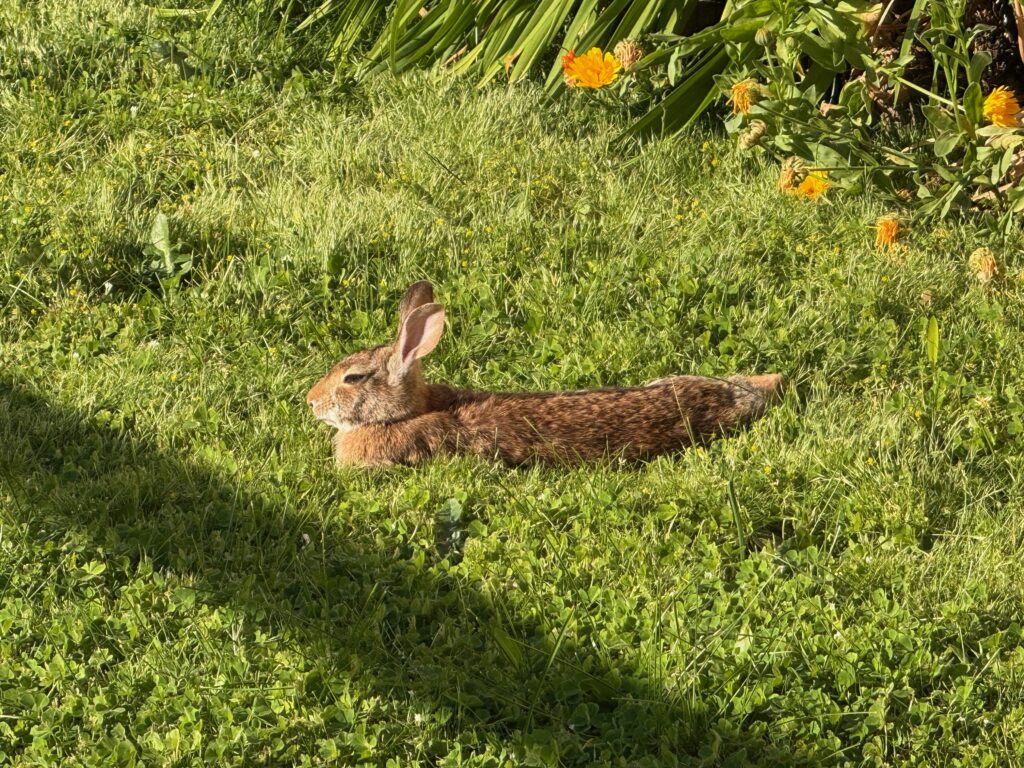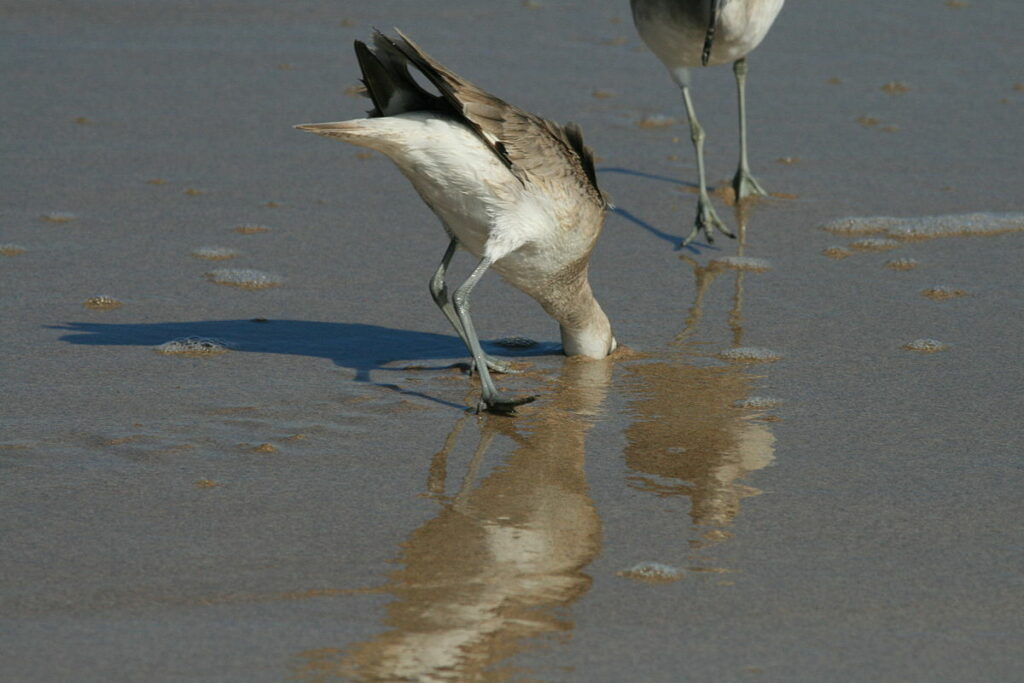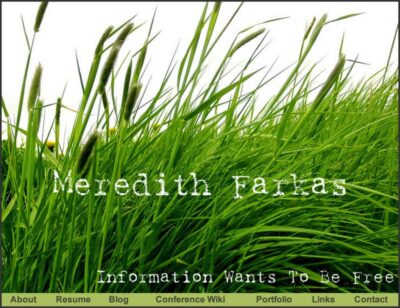After a year off from teaching to take care of baby Reed, I’m getting back up on the horse. I’ll be teaching a class on Web 2.0 and Social Networking Software for San Jose State University’s SLIS program starting this Tuesday. As usual, I’ll be using Drupal for my online classroom (rather than Angel, which is what SLIS uses), and I’m putting the student blog posts and discussions front and center in the classroom (the blog posts are the first things you see when you visit the site). I’m a little nervous that I have nearly 3 times the number of students registered for the class that I’ve had in the past (which means 3 times more papers to grade, blog posts to read, etc.), but I’m also excited because it means that the discussions will be even richer and more interesting. I love teaching this class; I always learn as much as the students do from the experience, and it’s really rewarding to see the growth of the students over the course of the semester. Should be fun!
I made a lot of changes to the topics covered in the class in light of how much Web 2.0 technologies have changed. I’d originally wanted to teach a class on online communities, but I couldn’t find enough good readings (or a textbook) for an entire course (now that Nancy White, et al.’s new book on Digital Habitats is out, it might be easier to do). I decided instead to focus more on online community-building in the course and am spending two weeks on it. I’m also having three guest speakers who run online communities: Frances Roehm of Skokie Net, Jessamyn West of MetaFilter, and my hubby, Adam Farkas, of ODwire. I know there are a lot of other topics I could have covered (cloud computing, mobile technologies, mashups, etc.), but I’m pretty happy with this semester’s lineup and I look forward to read my students reflections and discussions on these topics.
A while back, I’d asked folks on Twitter/FriendFeed/Facebook for suggestions of good Facebook pages to use as examples in my class. I thought I’d share those in case others are interested. You can find the list here. I don’t know that they’re the best Facebook pages, but I think they will give students some interesting food for thought.
As always in my classes, people from outside the class can register in the classroom and post comments on mine and my students’ posts. So feel free to subscribe to our RSS feed and/or join the conversation!




Have you read the book by Howard Reingold on one of the very first online communities. Hmm, looking for it on Amazon, I find that I’m not sure which of these two I was thinking of:
http://www.amazon.com/Virtual-Community-Finding-Connection-Computerised/dp/0749395001/
http://www.amazon.com/Virtual-Community-Homesteading-Electronic-Frontier/dp/0262681218/
Whichever one I read, at the time it was published, it was a revelation to me. I have no idea how well in general it would hold up now 15 years later, might not serve your purposes well since it’s about online communities using technology of 15 years old, but probably still interesting in a sort of anthropological way.
Meredith, would it be okay if I pointed my Illinois GSLIS class at this? I have at least two for whom it’s something they have told me they need and want.
Absolutely, Dorothea! They should feel free to follow along with the readings and discussion and can even take part!
I bet you’re talking about the Homesteading on the Electronic Frontier, Jonathan, and I would have definitely had it as a reading in the class, though we would have needed more recent books on the subject too. I found a weird hole with books published about online communities. There was a lot from 1995-2001, and then almost nothing between that time and now. Fortunately, Nancy White’s new book looks really awesome, so maybe we’ll see a rebirth of books on this subject matter.
Great, thanks! I’ll go post to the forum right this minute.
Meredith, I’m looking forward to seeing your course unfold with a large group – I find the diversity of conversations in a larger group VERY stimulating, even if more work!
As to books about online communities. Your observation about the gap is astute and the gap is there for a reason. If you look at the cycles of attention around online community you have the first significant rise after the publication of Howard Rheingolds “Virtual Community: Homesteading…” (By the way, the full text is available free online, thanks to Howard)
Then we had a few more great offerings from Amy Jo Kim, Cliff Figallo and Jenny Preece. There is also an excellent edited book by Smith and Kollock “Communities in Cyberspace.” They and Preece, I think, opened the door to academic interest and study of online communities.
From this initial start there were some other books, mostly aimed at what we now know were naive expectations about early forms of online communities for business application. There was a lot of hoopla.
THEN came the dotcom crash. “Build it and they will come” was realized as a pipe dream. And the interest in online communities subsided. (And I’d say for more than economic reasons – the limitations of software, the adoption rates for going online, etc.)
With the emergence of what we now call “Web2.0” and “social media” (which, by the way, have their roots back into the 60’s and the history is a VERY fascinating online community and network story unto itself and an example of the interplay between technology and community – we explore it a bit in the start of Digital Habitats), and the increase use of the internet, another wave of “online community” emerged. This one was more diverse.
There was the “online community” associated with buying things prompted by the longevity and success of Amazon (ratings) and eBay (reputation) and more sophisticated applications that allowed businesses to tap into the people side of retail.
There was the “online community” associated with social networks. Here is where I’d say this is not online community and that the differentiation – or more accurately, the continuum between individual, community and network — really started to emerge. I’ve been writing a lot about this continuum on my blog and in my slide decks (choconancy) if you are interested. I won’t bore you now.
This has, in my mind, not only extended the possibilities of how we interact together online for a purpose, but also diversified design and facilitation approaches – something I don’t think books are addressing. You find this juicy stuff these days in Twitter chats with the #KMers and #lrnchat and others. It is still a distributed discourse – which is both fascinating and time consuming.
If you want to see some of the other books I’ve find useful, you can find them here: http://astore.amazon.com/fullcircleassoci?_encoding=UTF8&node=0
For another take on online community try Nick Hornby’s new novel Juliet Naked.